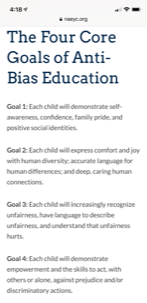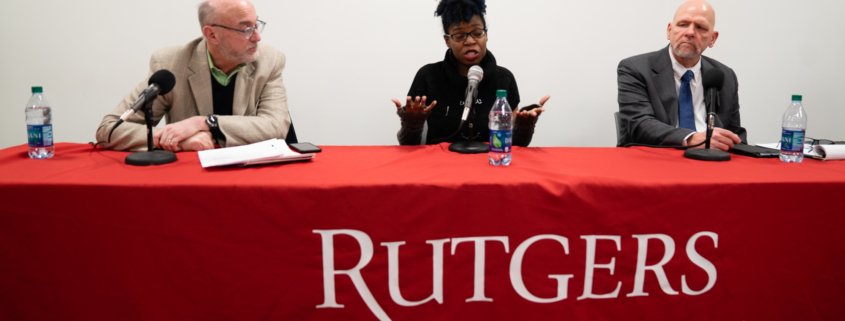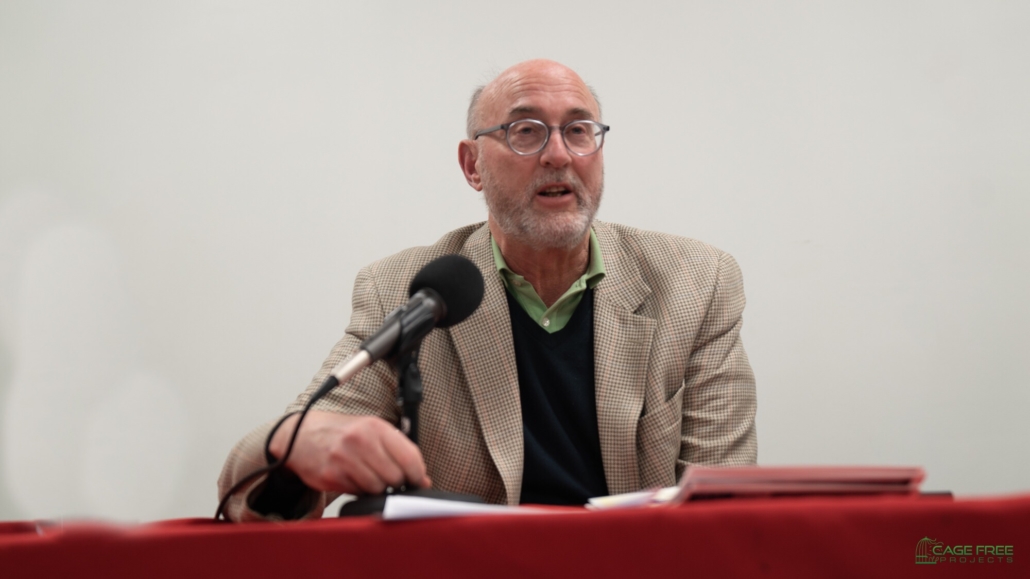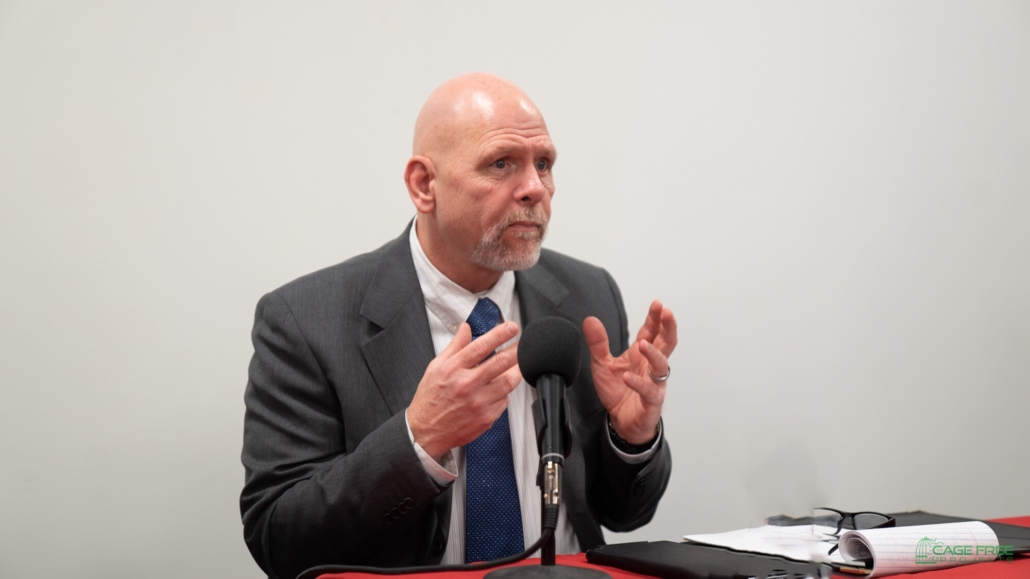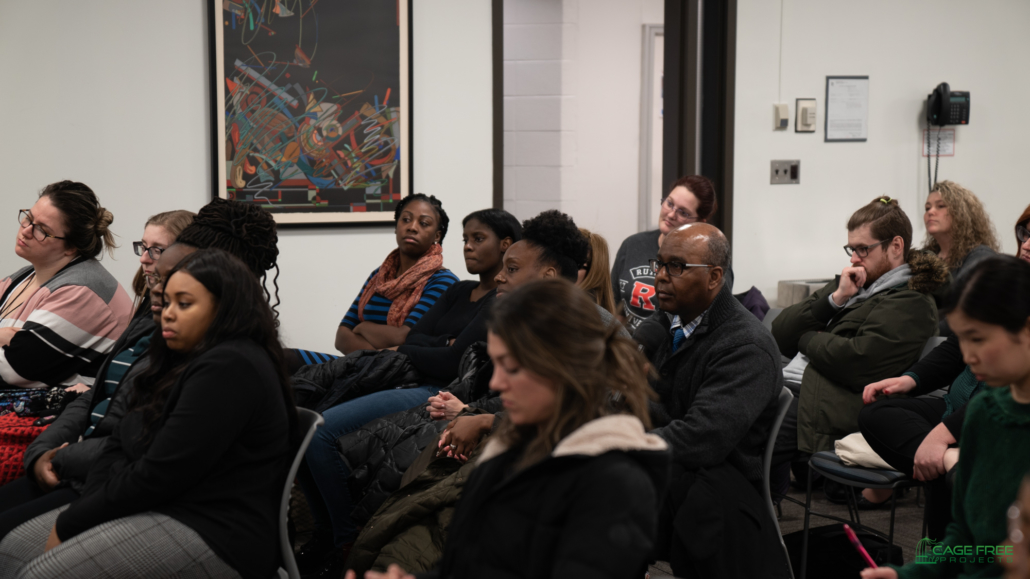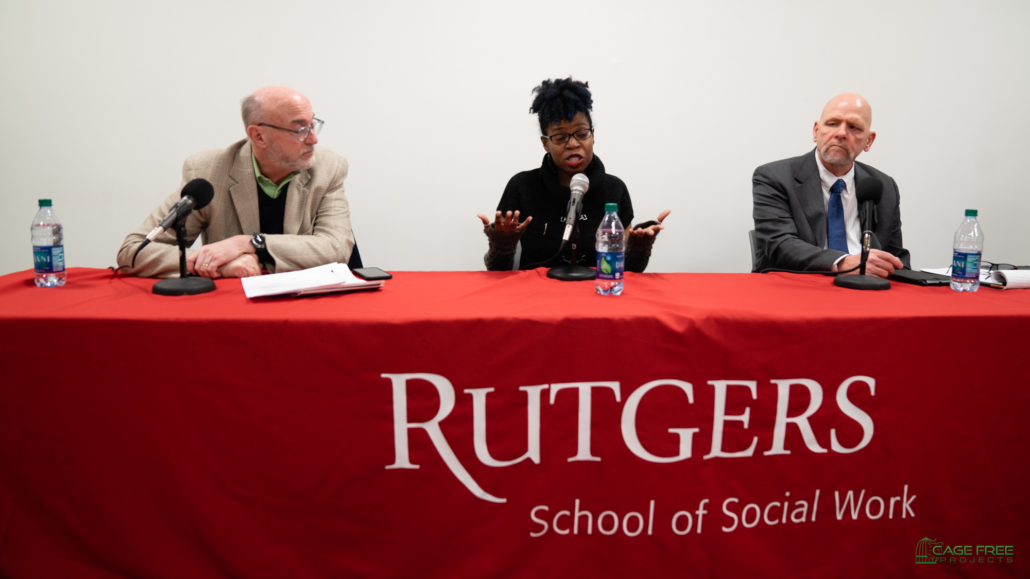Anti-Bias Education for Young Children and Ourselves, by Louise Derman-Sparks and Julie Olsen Edwards, provides practical guidance to confronting and eliminating barriers of prejudice, misinformation, and bias. Most importantly, the book includes tips for helping staff and children respect each other, themselves and all people. Individual chapters focus on culture and language, racial identity, gender identity, economic class, family structures,different abilities, holidays, and more.
NAEYC has compiled some key information from the book and related resources and self-reflective exercises for teachers as you think about anti-bias in your everyday work as educators.
Early childhood educators have deep faith in the principle that all people deserve the opportunities and resources to fulfill their complete humanity. Moreover, we have a unique role in making this principle real, in promoting all children’s chances to thrive and to succeed in school, in work, and in life. A basic principle in early childhood work is that when educators treat children as if they are strong, intelligent, and kind, children are far more likely to behave in strong, intelligent, kind ways. They are more likely to learn and thrive and succeed. Read more from Chapter 1 of Anti-Bias Education for Young Children and Ourselves.
The Four Core Goals of Anti-Bias Education
Goal 1: Each child will demonstrate self-awareness, confidence, family pride, and positive social identities.
Goal 2: Each child will express comfort and joy with human diversity; accurate language for human differences; and deep, caring human connections.
Goal 3: Each child will increasingly recognize unfairness, have language to describe unfairness, and understand that unfairness hurts.
Goal 4: Each child will demonstrate empowerment and the skills to act, with others or alone, against prejudice and/or discriminatory actions.
The Vision of Anti-Bias Education
The heart of anti-bias work is a vision of a world in which all children are able to blossom, and each child’s particular abilities and gifts are able to flourish. In this world:
- All children and families have a sense of belonging and experience affirmation of their identities and cultural ways of being.
- All children have access to and participate in the education they need to become successful, contributing members of society.
- The educational process engages all members of the program or school in joyful learning.
- Children and adults know how to respectfully and easily live, learn, and work together in diverse and inclusive environments.
- All families have the resources they need to fully nurture their children.
- All children and families live in safe, peaceful, healthy, comfortable housing and neighborhoods.
This vision of anti-bias education also reflects the basic human rights described in the United Nations (1989) Declaration of the Rights of the Child:
- The right to survival.
- The right to develop to the fullest.
- The right to protection from harmful influences, abuse, and/or exploitation.
- The right to participate fully in family, cultural, and social life.
In order for children to receive all these rights, their society, their families, and those responsible for their care and education must work to provide everything that each child needs to flourish. A worldwide community of educators shares the vision toward which anti-bias education strives. They adapt its goals and principles to the needs of children and families in their specific contexts.
What We Do Matters
Anti-bias education work in early childhood is shaped by a deep-seated belief in the importance of justice, the dream of each child being able to achieve all he or she is capable of, the knowledge that together human beings can make a difference. Listen to the voices of children who have experienced anti-bias education at school or at home. They give us hope and direction.
Several 3-year-olds (Asian, White, and Latino) are at the art table playing with small mirrors while they paint on paper ovals. As they look at their eyes, Jesse starts crooning to himself: “Oh, pretty eyes, pretty eyes. Lots of different eyes, pretty eyes, pretty eyes. Brown and blue, pointy, round. Pretty eyes, pretty eyes.”
Two preschool girls are playing Indians by whooping and pretending to have tomahawks. Miriam (age 4) stops them by saying, “Stop! That isn’t like real Indians. Mrs. Cowell is Cherokee, and you will hurt her feelings!”
A kindergarten teacher shows the children a magazine picture titled “Brides of America.” All of the women pictured are White. She asks, “What do you think of this picture?” Sophia, whose family is Nicaraguan, responds, “That’s a silly picture. My mom was a bride, and she doesn’t look like that.”
A mother relates the following anecdote: “When I picked Jonah up from kindergarten the other day, he said, ‘Mom, Kevin had tears in his eyes and his face looked sad and he told me that a bigger kid pushed him off the bars at recess. So Zena and I went to go find the boy and ask him why he did it. We couldn’t find him, but then we found him on the field. We’re not allowed to go on the field, but we had to because we had to save Kevin.’ After he told his story, I reflected, ‘Wow. You are a really good friend, Jonah.’ He said, ‘Yeah, when I see something unfair, Mom, I change it.’”
Why do we do anti-bias education work? We do it because we live in a world that is not yet a place where all children have equal opportunity to become all they are. A worldwide community of educators shares the vision toward which anti-bias education strives, adapting its goals and principles to the specific needs of the children and families they work with.
We invite you to be a part of this community, and we hope this book will provide some beginning maps for your journey.
“What Do the ABE Goals Mean to Me?”
Consider the four core anti-bias education goals as they apply to your own daily life and work. How do you assess yourself on each? (You can do this exercise by yourself or with your learning partners.)
- (ABE Goal 1) To what degree, or in what ways, do I nurture construction of a knowledgeable, confident self-identity and group identity in myself?
- (ABE Goal 2) How do I promote my own comfortable, empathetic interactions with people from diverse backgrounds?
- (ABE Goal 3) In what ways do I foster my critical thinking about bias?
- (ABE Goal 4) Under what circumstances do I cultivate my ability to stand up for myself and for others in the face of bias?
- What are the challenges to achieving these goals in my life?
- What might be ways for me to develop each of these goals in my work? in my personal life?



